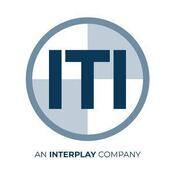Crane & Rigging Audits
Often we are asked to perform audits for companies that are involved in production, energy, offshore construction and construction in both the private and government sectors. Requests for audits may be the result of new client requests, internal observations of deficiencies or from observations made by a third party company providing training on site. In some cases, audit requests stem from crane or rigging accidents that involved injury, fatality(s) or property damage, which are the result of improper rigging applications or crane operations. In this blog, we will focus on third party audits.
First, let’s define audit: Audits are performed to ascertain the validity and reliability of information; also to provide an assessment of a system's internal control. The goal of an audit is to express an opinion on the person/organization/system (etc.) in question, under evaluation based on work done on a test basis. Quality third party audits should be conducted by a company that is recognized in the crane and rigging industry. The consultants are capable of verifying conformance to standards through review of objective evidence.
When the company has been selected, a meeting should take place prior to the audit with all concerned parties. After introductions, a brief summary should be given as to the purpose of the audit, the scope of work and the work areas that are to be audited (rigging lockers, rigging applications, cranes, etc.). If employees are to be interviewed at work stations, establish times when this can be achieved and, if applicable, that translators are made available. A timeline should be agreed upon by both parties. Th e company being audited will be given an informal field report before the auditor leaves the property or receive the formal report with findings and recommendations at a later date. The formal report will highlight deficiencies and findings raised with recommendations being made by the auditor. Also noted in this report will be areas that were noted to be in compliance and highlights of those positive observations. A follow up audit would be recommended based on the audit findings.
e company being audited will be given an informal field report before the auditor leaves the property or receive the formal report with findings and recommendations at a later date. The formal report will highlight deficiencies and findings raised with recommendations being made by the auditor. Also noted in this report will be areas that were noted to be in compliance and highlights of those positive observations. A follow up audit would be recommended based on the audit findings.
The company being audited should have the following readily available for the audit:
- Company crane & rigging guidelines in use
- OSHA or ASME standards in use
- Training records of employees
- Certification records of crane operators
- Certification records of riggers & inspectors
- Maintenance inspection records of cranes included in audit
- Inspection records of rigging (slings, hardware & hooks)
In closing, companies and personnel typically have a fear of audits as they feel that the purpose is to highlight deficiencies and raise findings that are negative. Although these findings would be in the audit report, positive sightings will also be included in the report.
ITI provides third party audits for our clients both domestic and international. Some prior international audit locations include: Nigeria, China, Panama, Mexico, Netherlands, Caspian Sea, Kingdom of Saudi Arabia, Quatar, United Arab Emirates, Malaysia, Indonesia, Singapore and Australia.
Happy Audits,



COMMENTS